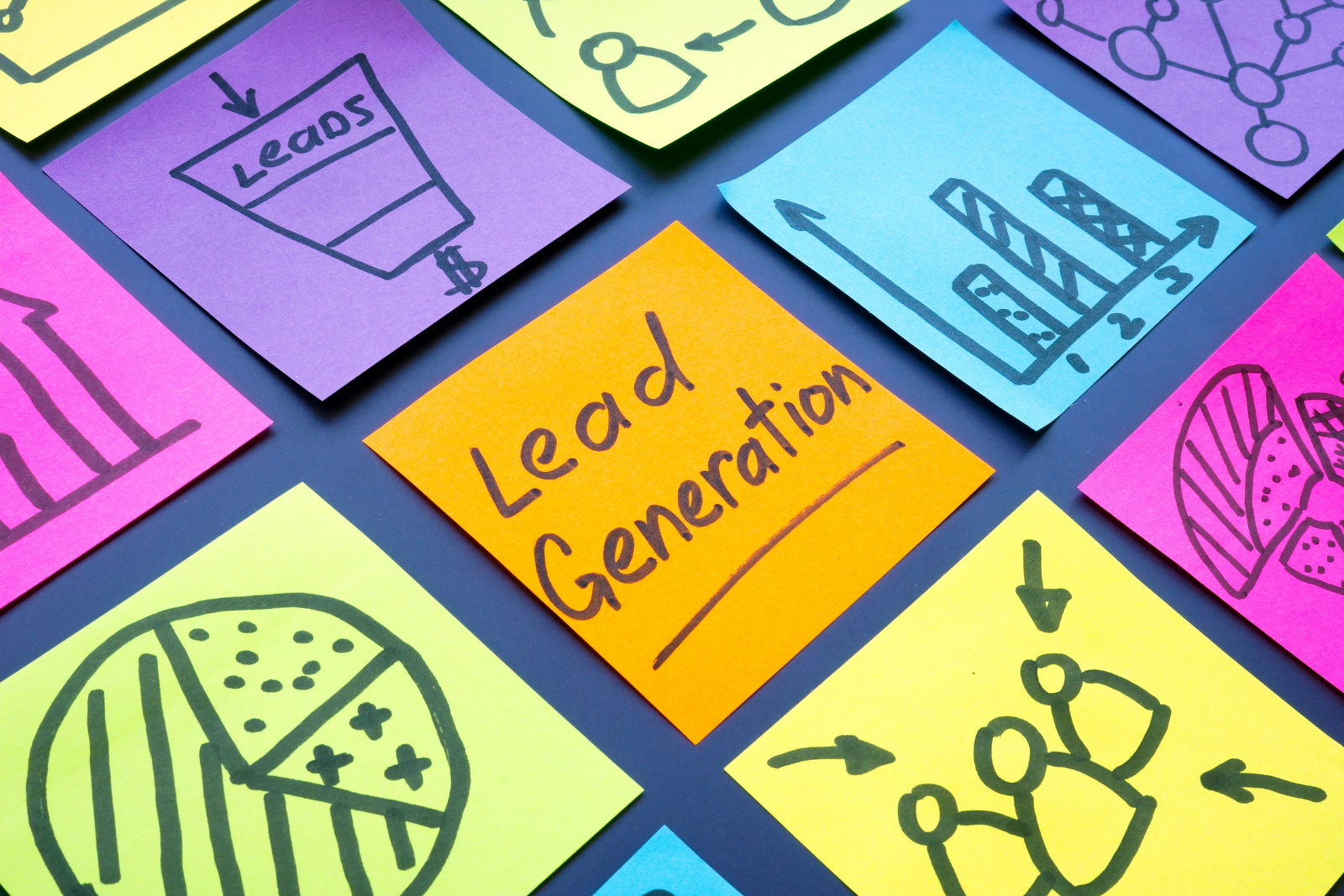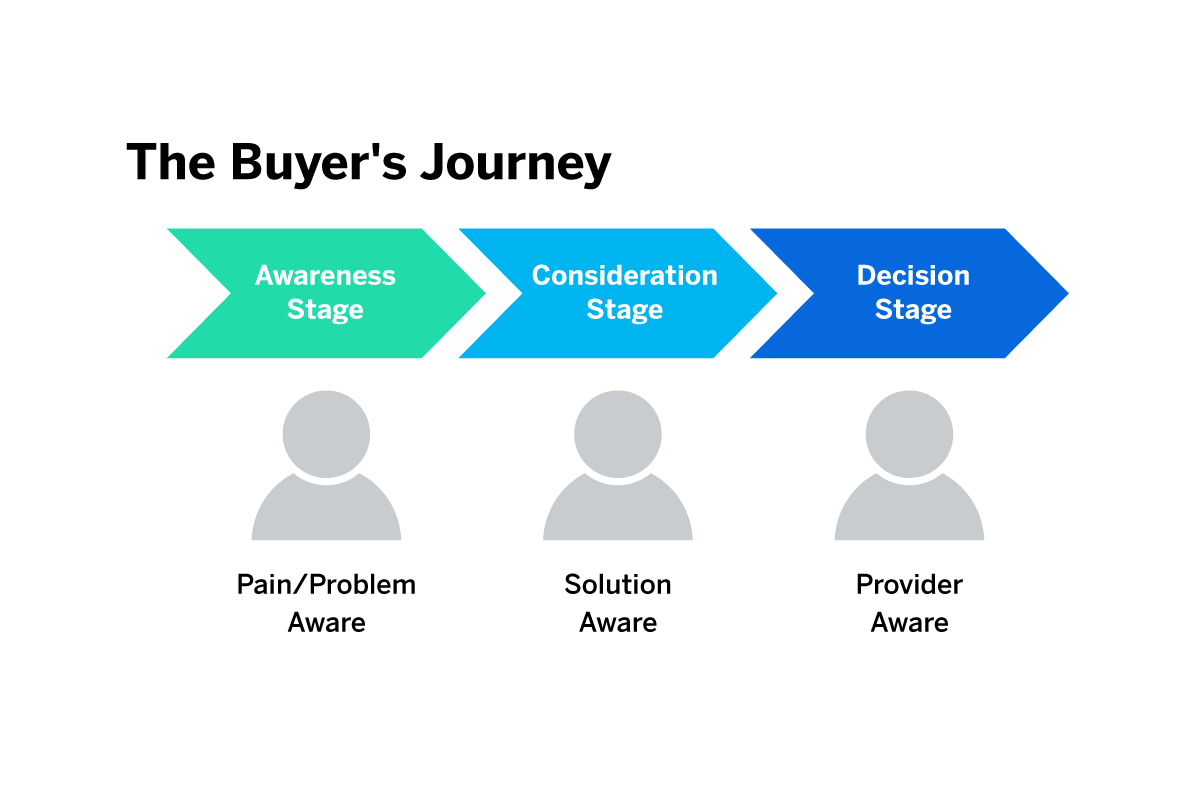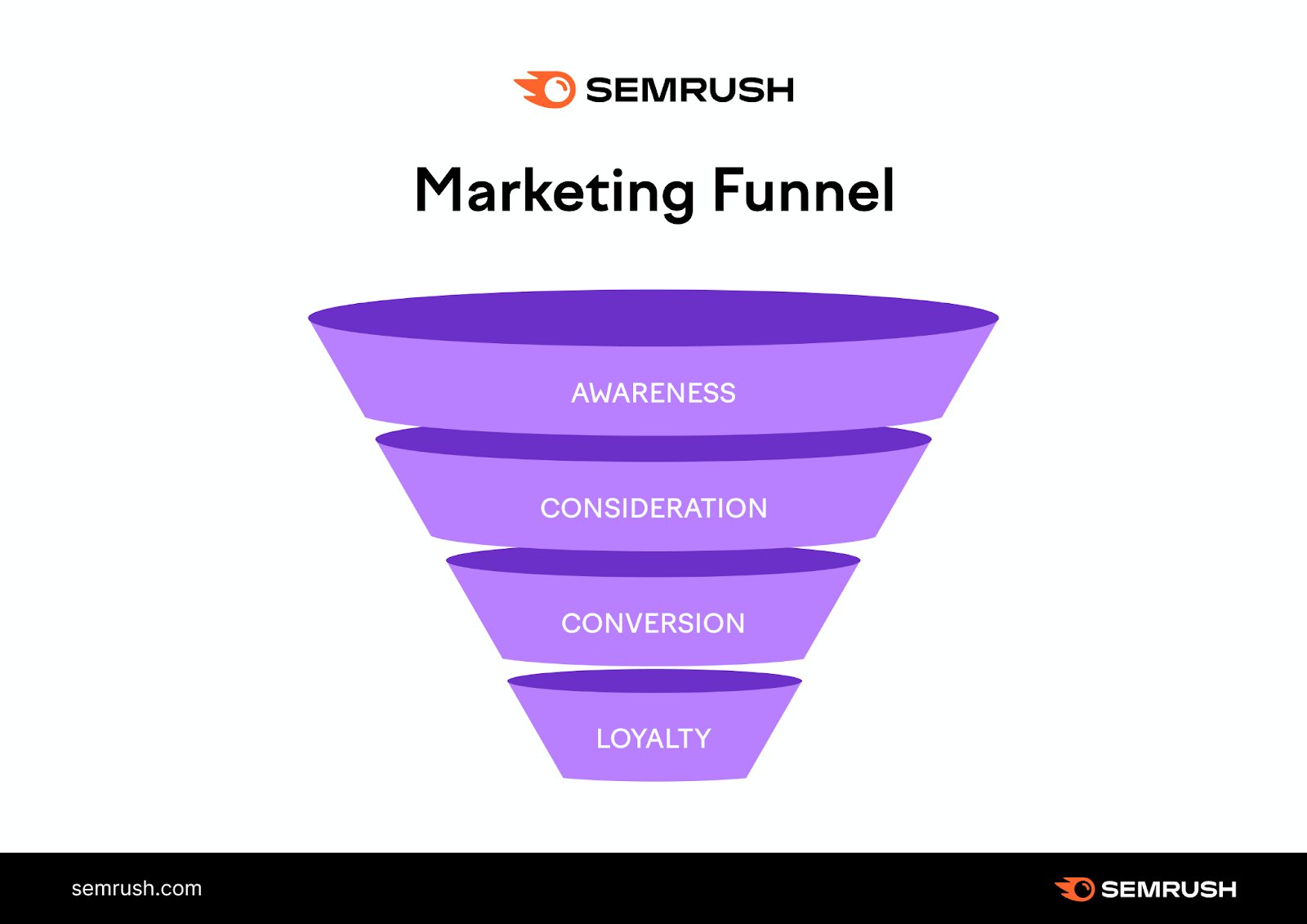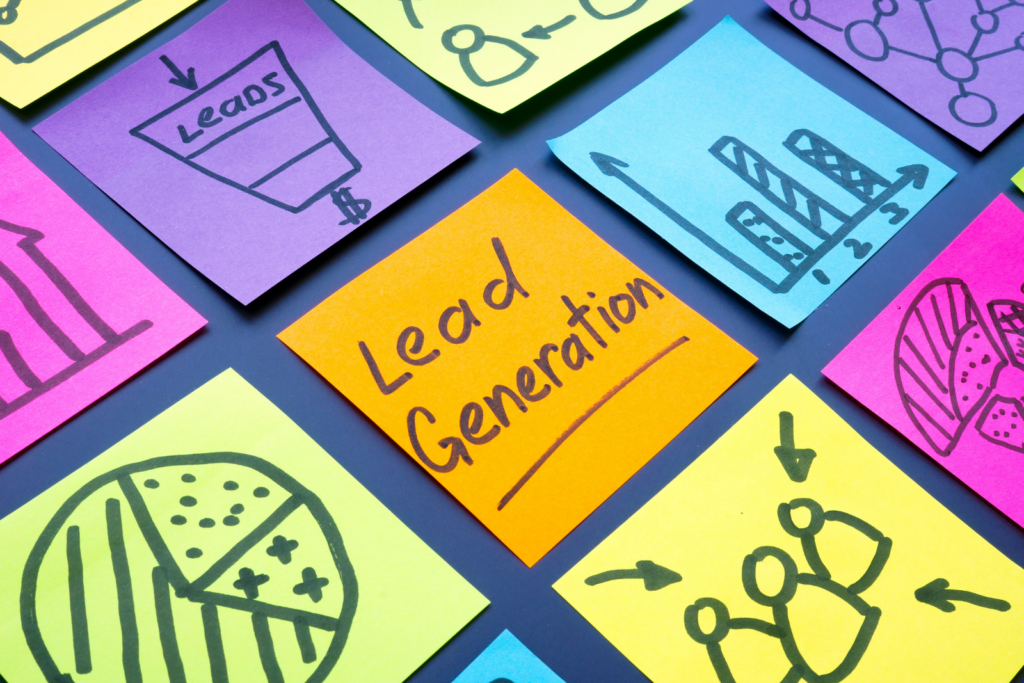Consider a scenario: You are a homeowner who wants to sell a home at a higher resale value. Someone suggests you do some remodeling. Would you wake up the next day and spend $50k on a kitchen remodel to increase your house’s marketing appeal? Unless you have money to burn – chances are, you’ll go through many stages before you make the final purchase decision.
You’ll first find out if a remodel actually has a positive effect on the resale value of your home, then research the ways to finance it, make calculated decisions about budgeting, talk to a few home remodeling companies, read reviews, and then finally pull the trigger.
These stages a person takes from the time an idea for a purchase is conceived to making the purchase is called a buyer journey.
When you consider the fact that most people don’t just search for what they want and instantly buy things and that 71% of consumers begin their first interaction with a brand with a generic search – it becomes clear why not focusing on reaching consumers at this stage is leaving a lot of money on the table.
SEO content ideas tailored for each stage of the buyer journey are critical so your business can reach its ideal customers at the stage where they are still browsing — so when they are ready to buy, they buy from your business.
In this blog, we discuss how your business can humanize its content for each stage of the buyer journey with the help of SEO tools, keyword research, and a buyer persona.
Why You Should Tailor Your Content to the Buyer Journey

Surveys and studies consistently show that businesses who customize their content to each stage of the buyer journey make their websites 2-5 times more effective and user-friendly for their target audience. So, one of the primary reasons to care about tailoring your content to your customer’s buyer journey is simply the impact it can have on your business’s revenue.
Here are a few more reasons it matters:
- Makes Content Marketing Efforts More Strategic
Because creating content and hoping it aligns with your audience is not a judicious marketing strategy, every piece of content needs to serve a specific goal for your business.
Aligning your content with the buyer journey means that every piece of content has a natural goal assigned to it. This makes your content marketing efforts more strategic.
You’re also able to measure its effectiveness with appropriate metrics and set goals to improve upon them. As a result, the return you get from each content asset increases too.
For instance, take a product/service page. In terms of the buyer journey, it is intended to encourage customers to contact your company for more information. If you wanted to gauge the effectiveness of such a page, you’d metrics like increased calls and increased form fill-outs. If you improve these metrics, you also increase the value this page adds to your business.
- Improves Conversions
If your SEO content solves the issues/needs that a customer has through distinct stages of the buyer journey, it can also gently “move” them to the next stage. For example, a homeowner who’s considering a home remodeling project. They’re researching various aspects of their renovation, from design ideas to selecting the right materials and contractors.
Imagine presenting them with tailored SEO content that provides side-by-side comparisons of different remodeling styles, material options, and even contractor profiles. Since your content helps them at this stage and shows them you’re an expert at it, who would they contact when they are ready to talk sales?
Increased trust through each stage = increased conversions.
- Builds Brand Loyalty
How likely are you to forget someone who helped you versus someone who didn’t? While you may not be helping anyone personally, if your content is — you’ll see people show it love.
Satisfied customers who find value in your tailored content are more likely to return for future purchases, share your content on social media, and even become loyalists who endorse your brand to their family & friends later in their buyer journey.
Different Stages of the Buyer Journey & the Marketing Funnel
The marketing funnel is intricately connected to the buyer journey.

A marketing funnel is a visual representation of your customer’s evolving interactions with your brand, i.e. from the time he becomes aware of a product/service to the time he actually makes a purchase.
While many marketing funnel models use different names for each stage of the buyer journey, the most well-known is the “Awareness-Consideration-Conversion-Loyalty” model. All models refer to the same sets of behaviors at each stage.

A) Awareness stage: This is the very top of the funnel, where customers first become aware of a problem or their requirement. They might not even be aware of your brand or product at this point.
This stage’s content typically is educational and problem-focused. It aims to educate them about the possible ways to satisfy their requirement or solve their problem.
Content created at this stage: Top-of-the-funnel content or TOFU content.
B) Consideration Stage: As customers become more aware of the solutions available for their problems, they actively start comparing solutions to each other.
Content in this phase provides in-depth information, comparisons, and guides to help potential customers evaluate their options. This stage is an opportunity to position your business’s offerings as valuable.
Content created at this stage: Middle of the funnel or MOFU content.
C) Decision Stage: At this stage, your customers have already done their research, and are ready to start sales conversations and make a final purchase decision.
The content here focuses on direct selling. It has to convince the customers to select your product or service. This includes product demos, case studies, testimonials, and other content that shows your customers why your business is the right choice.
Content to create at this stage: Bottom of the funnel, or BOFU Content.
D) Loyalty Stage: The loyalty stage involves nurturing your customers post-purchase.
After a successful purchase, the buyer’s journey doesn’t end. As you have already established trust with your customers that led to the first purchase, there’s an opportunity to upsell or maintain communication with them so they use your service again in the future.
Because recurring customers also tend to be the most profitable ones for a business, creating effective content at the loyalty stage is great for easy wins. This could include sending them special offers via email for their loyalty or giving them a shoutout for their trust in your brand.
Content to create at the Loyalty stage: This stage focuses on remarketing efforts as people are already brand aware.
| Buyer Journey Stage | Content Focus | Content Types | Purpose of Content | Examples |
| Awareness Stage (TOFU Content) | Educational and informative content addressing the audience’s pain points | Blog posts Infographics Explainer videos Social media posts | Identify and address common problems or needs that your audience may have. | Blog: “10 DIY Home Improvement Ideas for Beginners” |
| Consideration Stage (MOFU Content) | In-depth information, comparisons, and solution-oriented content | Whitepapers eBooks Webinars Product comparison guides | Provide comprehensive solutions and guides to help your audience evaluate their options. | EBook: “Make your home remodeling budget with this step-by-step checklist.” |
| Decision Stage (BOFU Content) | Content that persuades and highlights the unique value of your offering | Product demos Customer success stories Free trials Special offers | Showcase why your product or service is the best choice and provide compelling reasons for the audience to make a decision. | Product Page: “Our Affordable Home Remodeling Service” |
| Loyalty Stage (Promotions and remarketing) | Content that nurtures and engages existing customers, thus fostering loyalty. | Newsletters Exclusive content Loyalty programs Surveys | Provide ongoing value to your customers, such as tips and tricks, updates, and exclusive access to keep them engaged and returning. | Email: “Offering 10% off for all existing customers.” |
B2B vs. B2C Buyer Journey
In the realm of marketing and sales, the buyer journey isn’t a one-size-fits-all concept. Because the decision-makers change from individuals to businesses in the case of B2B markets, the approaches towards creating content also have to cater to businesses.
The table below shows the distinct differences between the B2B and B2C buyer journeys:
| Aspect | B2B Buyer Journey | B2C Buyer Journey |
| Decision-Making units | The decision-making process is often complex. Multiple stakeholders may be involved in the purchase decision. Each stakeholder has a set of requirements and priorities. | B2C transactions are generally simpler. Only one or a few individuals make the purchase decision. |
| Sales cycles | B2B transactions typically have longer sales cycles due to the complexity and higher stakes involved. Building trust, providing in-depth information, and nurturing leads over an extended period are all essential. | B2C sales cycles are often shorter. Consumers are more impulsive and willing to make quick decisions. |
| Decision factors | B2B buyers tend to make decisions based on logic, cost-effectiveness, and ROI. | B2C buyers are driven by emotions, desires, and aspirations. |
| Content focus | The content must demonstrate practical benefits and value | The content must evoke emotions and lifestyle benefits |
| Emphasis | Building strong, ongoing relationships with B2B clients is crucial. | The emphasis is often on individual transactions. |
When you understand how B2B and B2C buyer journeys differ, you can maximize the efficiency and effectiveness of your content marketing strategy, allocate resources strategically, keep your messaging relevant, and win.
How to Align Content with Stages of Buyer Journey (But for Your Ideal Audience)

Even though buyer journeys tell you where your audience is in the buying process, they don’t tell you much about what exactly motivates people to buy. It also doesn’t account for the fact that different subgroups of people can have different motivations behind their purchases.
To create effective content, you also need to address the motivations behind each stage for each set of customers and deliver the right content to the right people at the right time.
A buyer persona helps you do just that.
A buyer persona is a detailed, semi-fictional representation of your ideal customer that encompasses demographic information, pain points, motivations, and preferences. By developing a clear buyer persona, you gain invaluable insights into who your audience is and what drives their decision-making.
For instance, content aimed at a young couple looking to remodel a starter home versus a couple who wants to remodel their second or third vacation home will not be the same — even if both of these types of audiences are at the same stage of the buyer journey.
How Buyer Personas Help Create Effective Content (An Example)
You’re a home remodeling professional looking to connect with potential clients effectively. You understand that not all homeowners have the same needs and preferences when it comes to remodeling their homes. Some may prioritize modern design, while others value eco-friendliness and sustainability.
To tailor your marketing efforts accurately, you decide to create a buyer persona. Let’s call this persona ’Sarah’.
| Buyer Persona: Sarah She is a homeowner in her early 50s, living in a suburban neighborhood. She’s been contemplating a home renovation project, specifically focusing on upgrading her bathroom to be more accessible and accommodating for her elderly parents. Sarah’s primary pain point is finding a remodeling professional who understands the unique requirements of an accessible bathroom. She wants to ensure her parents’ safety and improve their quality of life. Sarah prefers straightforward, informative content that provides step-by-step guidance and showcases past projects with a focus on accessibility. |
When you have a clear picture of who people like “Sarah” are -– you can create content that directly speaks to their requirements, such as blog posts on “Creating Accessible Bathrooms for Aging Parents” and showcasing case studies of similar projects.
This tailored approach not only makes your marketing more effective but also shows potential clients like Sarah that you understand their unique concerns and are well-equipped to address them.
SEO Content Ideas for Each Stage of the Buyer Journey

Content at each stage varies in terms of format and the angles it takes. Here are some SEO content ideas for each stage of the marketing funnel:
SEO Content Ideas for the Awareness Stage
Because your audience is looking for answers to questions and solutions to their problems at the awareness stage, educational content is the way to go. Blog posts and infographics are the most common content types used for this purpose.
Giving credible answers and providing a good reading experience at this stage positions you as a person with expertise.
How to Create Effective Blog Posts:
- Address common pain points and questions elaborately.
- Cite your sources, use analogies, examples, and case studies to show you know what you’re talking about.
Content Angle: Insights, tips, and how-to guides related to your industry or niche.
CTA Angle: Subscribe to the blog or newsletter for regular updates and more educational content.
Examples of Blog Post Topics:
- The Ultimate Guide to Home Remodeling: Where to Start
- 10 Common Kitchen Renovation Mistakes to Avoid
- How to Choose the Right Flooring for Your Home
How to Create Infographics that Educate
- Inform your audience by presenting data or explaining concepts concisely.
Content Angle: Statistics or facts related to your industry
CTA Angle: Invite viewers to share the infographic on social media or visit your website for more educational resources.
Examples of Blog Post Topics:
- Steps involved in a home remodeling project
- Benefits of eco-friendly materials in renovation
- Evolution of kitchen design trends over the years
SEO Content Ideas for the Consideration/Interest Stage
In the consideration or interest stage of the buyer journey, your audience is looking for detailed information that helps them make informed decisions.
Comparison guides and in-depth how-to articles typically work well here.
Comparison Guides for Consideration
- Comparison guides present the pros and cons of each choice. Your content must provide them with a clear, unbiased view of how your product or service stacks up against competitors.
- Present a fair assessment of each option.
- Avoid overly promoting your own product or service.
- Provide accurate information.
- Cover all relevant aspects that matter to your audience — Features, pricing, performance, customer reviews, and any unique selling points.
- Use visuals such as tables, charts, or infographics to make the comparison visually engaging and easier to digest.
- Organize the content in a logical and user-friendly manner, allowing readers to quickly find the information they’re looking for.
Examples of Comparison Guides:
- Comparing Home Remodeling Contractors in Your Area
- Choosing the Right Flooring for Your Home: A Comprehensive Comparison
- Comparing Kitchen Remodeling Styles: Which One is Best for You?
In-Depth How-to Articles to Create Interest
“How to” articles account for 77% of the most popular content formats used by bloggers.
These articles are a chance to offer practical value to your customers to win their trust as a trusted service provider.
Tips for Crafting Effective How-to Articles:
- Start with a clear and specific problem or task, then present the solution in a clear, actionable way.
- Address common pain points or tasks that your audience is likely to encounter.
- Provide thorough, easy-to-follow instructions.
- Use images, videos, or diagrams to clarify complex steps if necessary.
- Share personal experiences, case studies, or success stories related to the topic.
Examples of How-to Articles:
- How to Plan Your Kitchen Remodel: A Step-by-Step Guide
- Comprehensive Guide to Mastering Home Landscaping
- DIY Home Maintenance: 10 Essential Tasks You Can Do Yourself
SEO Content Ideas for the Decision Stage
In the decision stage of the buyer journey, your content must convince your audience to start a sales conversation with your business.
Assist them by optimizing product/service pages and sharing testimonials and reviews that further reinforce their opinion of you as a reputable seller.
Optimizing Product/Service Pages
Optimizing product or service pages in the decision stage involves addressing common questions about pricing of your service/product, providing details on the specs and your process, and facilitating the sales conversation with the right call-to-actions (CTAs.)
When you show them “trust signals” on these pages, you increase the likelihood of conversions.
Tips for Optimizing Product/Service Pages:
- Provide clear and detailed descriptions of your products or services, including features, specifications, benefits, and any unique selling points.
- Include high-resolution images, videos, and interactive elements that showcase your offerings from different angles or in use.
- Display pricing, discounts, and any special offers.
- Make it easy for visitors to calculate their final costs. Be as transparent as your sales process allows.
- Include prominent CTAs that guide visitors toward making a purchase, requesting a quote, or scheduling a consultation.
- Offer easy access to customer support, such as live chat, email, or phone, to address any last-minute questions or concerns.
Examples of Optimized Product/Service Pages:
- Home Renovation Service Page
- Remodeling Tools Product Page
- Landscaping Service Page
Leveraging Testimonials and Reviews as Trust Signals
Potential buyers frequently turn to real experiences and feedback from satisfied customers to assess the quality and credibility of your products or services.
Nothing shows more credibility than a genuine note of appreciation from a past customer whose problem you solved with your business offerings, so they are really important.
You can include these testimonials on service/product pages or create blog posts/special features that show the “behind the scenes” process for that project, and your customer’s experience during it.
Tips for Using Testimonials and Reviews Effectively:
- Gather genuine testimonials and reviews from satisfied customers and prominently display them on your product or service pages.
- Include a variety of testimonials, covering different aspects of your offerings, such as quality, customer service, and value for money.
- Use images or videos alongside written testimonials to add authenticity.
- Go one step beyond: share success stories or case studies that demonstrate how your product or service solved specific problems for customers.
- Engage with customers by responding to reviews, both positive and negative, to show your commitment to customer satisfaction.
Examples of Testimonials and Reviews Content:
- Customer testimonials with images or videos on a product page for a home renovation service
- A compilation of positive reviews for a kitchen appliance product with star ratings
- A case study showcasing how your landscaping service transformed a customer’s backyard
SEO Content Ideas for the Loyalty Stage
At this point, your customers are already familiar with your brand and its offerings. They already trust your business (having used it before), and won’t be using search engines to look for service providers or solutions.
Instead of creating SEO content for these types of customers, businesses should look for ways to deepen their connection with existing customers. Your messaging should reinforce how they can continue benefiting from what you offer.
The following marketing strategies could be applied at this stage:
- Use User-Generated Content/Testimonials on Social Media: You can translate your customers’ positive feedback into valuable endorsements. If they tagged your business in a positive post online, share it and use that to build more credibility with your network.
When you serve existing customers reminders for why your brand is great via social media and email campaigns, you reinforce the trust and loyalty you have built with them.
- Use Email Newsletters to Offer Exclusive Deals or Maintain a Line of Communication
Continue engaging with your already loyal audience through personalized and relevant content.
Send exclusive offers, discounts, and loyalty rewards to show appreciation for their continued support. Or keep them informed about new products or services that may align with their previous purchases or interests.
Nurture the relationship by sharing valuable content, tips, and updates that correlate with maintenance of goods they purchased from you to demonstrate your ongoing commitment to their satisfaction.
- Build an Authentic Community on Social Media
Leverage social media campaigns to create engagement and interaction among your already active audience.
Encourage users to share their experiences, stories, and photos related to your brand. Run contests, surveys, and polls to involve your loyal customers. Show them that their opinions matter.
Tools and Resources for Creating Effective Content for Each Stage of the Buyer Journey

These tools will provide you with insights and resources needed to connect map out your buyer journey and elevate your SEO content game.
Keyword Research Tools
Keyword research tools serve as the starting point for mapping an effective buyer journey and the content that should go with it. Keywords give away the intent behind each search query — which helps you understand where someone is in the process of interacting with your brand.
For instance, “how to” keywords show that a person is problem aware, but lacks an awareness of what could possibly solve their problem. This gives you as the business an opportunity to create “how to” content that not only shows them the steps and the process behind solving that particular problem but also tells them why they’d be better off hiring a professional to take it off their hands.
Mapping out the buyer journey simply cannot be done unless one understands what it is the customers need to know at that point in their buying journey — which is where keyword research becomes a guiding force.
Recommended tools:
- SEMrush: SEMRush is a full-suite SEO tool. You can use it for keyword research, position tracking, technical audits, on-page SEO, and more.
For keyword research, it allows you to filter words by their keyword intent, keyword difficulty, and other important filters that really quicken the process.
- Ahrefs: Ahrefs is SEMRush’s biggest competitor. It also has similar full-suite SEO features. The option to filter keywords by volume, CPC, etc. is helpful.
- Google Keyword Planner: This is a free tool within Google Ads that’s a great starting point for keyword research. It lacks the frills of other paid tools, especially if you want to track each keyword’s performance in SERPs. But it’s good enough for discovering relevant keywords, estimating their search volumes, and mapping them for the buyer journey.
- Mangools: Cheaper than other paid tools on this list, Mangools is great for keyword research, tracking your positions, and analyzing your backlinks. It lacks the advanced auditing features of Ahrefs and SEMRush, but it does the job (affordably.)
Content Calendar
Once you have your keywords down, you will need to sort them into a content calendar that is also mapped out for the buyer journey. You can use Excel or Google Sheets to do this. If you prefer organizing content within a project management workflow, Notion is a popular option.
Content calendars are important to create effective content for each stage of the buyer journey because they provide a structured approach to planning and organizing content. They ensure that:
- Timely Delivery: Content is scheduled and released at the right time, guiding users through each stage.
- Consistency: Messaging and content align with the intended stage, allowing you to choose the right call-to-actions, and maintain a seamless user experience.
- Resource Allocation: Resources like writers and designers are allocated based on the specific needs of each stage. You can schedule how many pieces of content you create for each stage during a month, based on the priorities of your business.
- Content Adaptation: Existing content can be identified and repurposed to suit different stages, saving time and effort.
For instance, you can create blog posts out of user-generated content or repurpose existing blogs for social media posts for different stages – and keep track of it inside a content calendar.
- Data-Driven Adjustments: Integration with analytics allows data-driven improvements to keep content effective at each stage.
- Collaboration: Content calendars present your content strategy for each stage of the buyer journey visually – allowing other people in your team to also contribute to it easily.
SEO Plugins
SEO plugins don’t help with content ideas, but they do help in making your on-page SEO better so your content gets more visibility on search engine result pages (SERPs.)
Here are some of the most popular plugins for SEO:
Yoast SEO: Yoast provides real-time suggestions for improving content, meta tags, readability, and more to help your sites perform better in search engines. Yoast SEO is an excellent choice for beginners and advanced users alike.
Rank Math: This is a powerful and feature-rich WordPress SEO plugin that offers advanced SEO capabilities. It assists with on-page optimization, schema markup, and provides insights into keyword rankings.
It has built-in suggestions based on widely accepted best SEO practices.
All in One SEO Pack: All in One SEO Pack covers various aspects of SEO, from on-page optimization to XML sitemaps and schema markup.
It’s known for its flexibility and ease of use. It also offers seamless integration with popular social media platforms like Facebook, Twitter, Pinterest, and more. Users can also connect it with Google Search Console.
Keyword Strategy: Using the Right Keywords for Each Stage
Search intent behind each keyword gives away what stage of the buyer journey your customer is at. For instance, if they are already using your brand name for search, they may be in the process of starting a sales conversation. Or they could be returning customers who want to re-purchase your product or service.
Luckily, keywords at each stage can be identified with key markers.
In the awareness stage, for instance, your customers will be looking for broader information. This could include searches like “best remodeling ideas” or “why should I remodel my house”. “How to” keywords like “How do I finance my remodel” indicate the consideration stage. Finally, transactional keywords such as “hire kitchen remodeler” or “buy energy-efficient appliances” signal a readiness to make a purchase decision.
Start with a tool such as SEMRush to filter out keywords based on their search intent. If you’re unsure of how to do that, we recommend checking out this comprehensive guide on search intent.
Final Words
- Crafting content tailored to buyer personas and the buyer journey is paramount for engaging and converting potential customers effectively.
- Utilizing the right keywords at each stage not only maps out the buyer journey but also enhances SEO performance, ensuring your content is discovered by the right audience.
- From awareness to decision stages, aligning content with user intent is a strategic SEO approach that fosters successful conversions and customer satisfaction.
Depending on your brand, we understand the buyer journey looks a bit different for each of our clients. We strategically align your goals with a content strategy that adheres to your unique buyer journey. Contact Unframed Digital to get started.
FAQs
A. What is the difference between the marketing funnel and the buyer’s journey?
The marketing funnel is a broader framework that outlines the stages of customer acquisition, while the buyer’s journey focuses on the individual’s path to making a purchase within that funnel.
B. How can SEO improve my content’s performance in the funnel?
SEO can improve content’s performance in the funnel by ensuring that it aligns with user intent at each stage, making it more discoverable and relevant.
C. Why use a marketing funnel?
A marketing funnel helps businesses streamline their marketing efforts, guiding prospects through stages from awareness to conversion, ultimately increasing efficiency and revenue.










